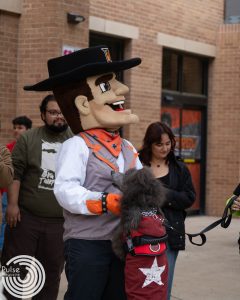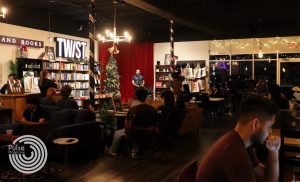Data science course at UTRGV
Do you enjoy coding and statistics or maybe studying data to learn more about people’s behaviors and habits? Perhaps you should consider a career in data science.
According to the U.S. Bureau of Labor Statistics’ 2020 report, the demand for data science skills will increase by 27.9 % through 2026. Data scientists also break data into smaller pieces that companies can use to create algorithms or better serve their customers. According to towardsdatascience.com, major enterprises such as Facebook, Google and Amazon use the online data that data scientists gather from their customers to their advantage, thereby creating more profit for these companies. However, according to the article 11 Data Science Careers Shaping Our Future, there is a noticeable shortage of qualified data scientists.
At the University of Texas Rio Grande Valley, there are professors who teach data science courses. One of them is Marzieh Ayati, an assistant professor in the department of computer science, who earned her doctorate in computer science from Case Western University Ohio.
Ayati’s research focuses on bioinformatics and computational biology, which consists of analyzing biological data to find biomarkers for diseases, finding drug targets and using her findings to help breast and ovarian cancer patients as well as Alzheimer’s disease patients. These studies require algorithms.
“You can see that we really can use all those algorithms in real life,” Ayati said. “That’s why I kind of got interested in this area, which is part of data science. That’s why I offered Introduction to Data Science at UTRGV as well as a new course.”
The data science course is a new elective at UTRGV that was introduced in fall 2021. Ayati said that this course is a combination of statistics, computer science and math. In the first month, the class discusses the statistical analysis of the data.
“What I am teaching them is basically how to use the data to tell a story and make the decision,” said Ayati. “You can visualize the data and have the interpretation that you want to deliver to the audience, and that’s the power of the data.”
Ayati added that there are a lot of misconceptions surrounding the data science field. She said that most people believe that data scientists only do coding and that they must pursue a career in software engineering.
“Typical computer science students think that, ‘OK, I am just gonna do coding, and software engineer or software testing,’” said Ayati. “But now there are jobs like data science, data engineer, data analytics, business analytics, and all these dealing with data [and] analyzing this data and applying the algorithms that we learn in computer science.”
To make her students aware of the variety of things a data scientist can do, Ayati said she gave her students a final project in 2021. This project consisted of analyzing data on a topic of interest and using a visual representation to tell a story.
For the assignment, three students in Ayati’s class, Leonor Hernandez, Mario Velasquez and Nestor Infate, decided to study Texas executions and the last words of inmates. The three students are computer engineering majors. Hernandez and Velazquez are seniors and Infate graduated last semester.
“We analyzed the Texas execution [and] we [tried] to find any patterns based on demographic information,” said Velazquez. “Their race, their age, their birthplace. We just try to find patterns or visualize those numbers. That’s what our project was about.”
Their main focus was to gather the most common last words the inmates shared before they were executed. They said they studied about 300 people for the project, and they found that the most common last word used was love. Based on their study, they also concluded that someone on death row is more likely to be a white male from Dallas county. Hernandez and Velasquez said that they learned many other things in the data science course and were glad they worked on the project.
“This was a fun project to work on even though when you get into the reading [of] the last words, it was kind of sad and grim,” said Hernandez. “It was a heavy topic. But we like to light it up whenever we show it to people because it’s an interesting topic.” Hernandez and Velazquez said students should take the course too because it will help them have a better understanding of a career as a data scientist.
“There’s a lot of data analyzing jobs out there,” said Velazquez. “I wanted to take the course to see if I could ever get an entry-level position as a data analyst or data scientist through taking this class.”
Hernadez said that she enjoyed Ayati’s classes. She said that after taking two coding classes with Ayati, she wanted to take the data science course.
According to Hernandez, “I didn’t know it would be so interesting. We use it [data science] so much in our daily lives, in our daily routines. Data scientists analyze everything and help us make conclusions. It’s everywhere.”





